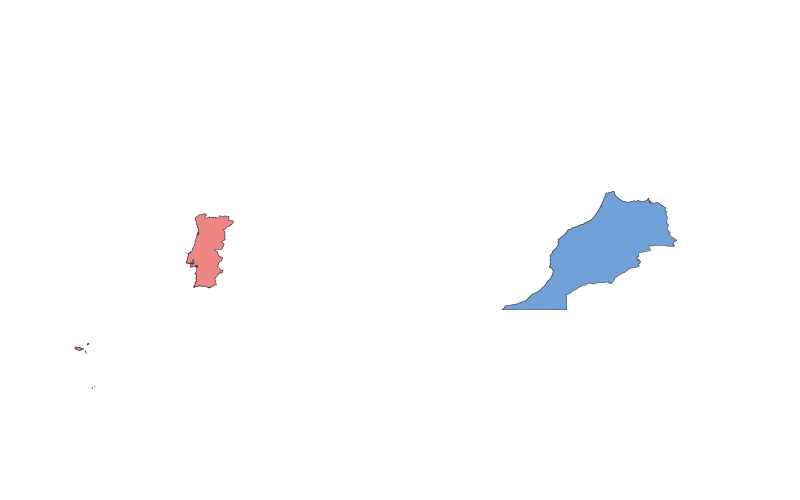Portugal vs. Marrocos: Uma Comparação Geográfica

Portugal vs. Marrocos: Uma Comparação Geográfica
Tabela Comparativa
| Categoria | Portugal | Marrocos |
|---|---|---|
| Localização | Sudoeste da Europa, na Península Ibérica | Norte da África, fronteira com o Oceano Atlântico e o Mar Mediterrâneo |
| Tamanho | 92.212 km² | 446.550 km² |
| Clima | Mediterrânico (verões quentes, invernos amenos) | Mediterrânico no norte, árido no sul |
| Recursos Naturais | Madeira, pesca, minérios (cobre, estanho) | Fosfatos, pesca, minérios (ferro, chumbo) |
| Desenvolvimento Urbano | Cidades densamente povoadas (Lisboa, Porto) | Cidades históricas (Casablanca, Marraquexe) e modernas |
| Transporte | Rede ferroviária e rodoviária desenvolvida | Rede em expansão, especialmente em grandes cidades |
Descrição dos Países
Portugal
Portugal, localizado no sudoeste da Europa, é conhecido por sua rica história marítima e cultural. Como um dos países mais antigos da Europa, Portugal teve um papel significativo na Era dos Descobrimentos. Sua cultura é marcada pelo fado, pela gastronomia (como o bacalhau) e por festivais tradicionais. Economicamente, Portugal é membro da União Europeia, com destaque para o turismo, agricultura e indústria têxtil.
Marrocos
Marrocos, no norte da África, é um país com uma mistura única de influências árabes, berberes e europeias. Sua história é rica, com cidades imperiais como Fez e Meknés. A cultura marroquina é vibrante, refletida em sua música, culinária (como o tajine) e artesanato. Economicamente, Marrocos é um dos países mais estáveis da região, com setores fortes em agricultura, turismo e mineração (especialmente fosfatos).
Ambos os países compartilham uma proximidade geográfica, separados apenas pelo Estreito de Gibraltar, e têm histórias entrelaçadas, especialmente durante o período das navegações e colonizações.